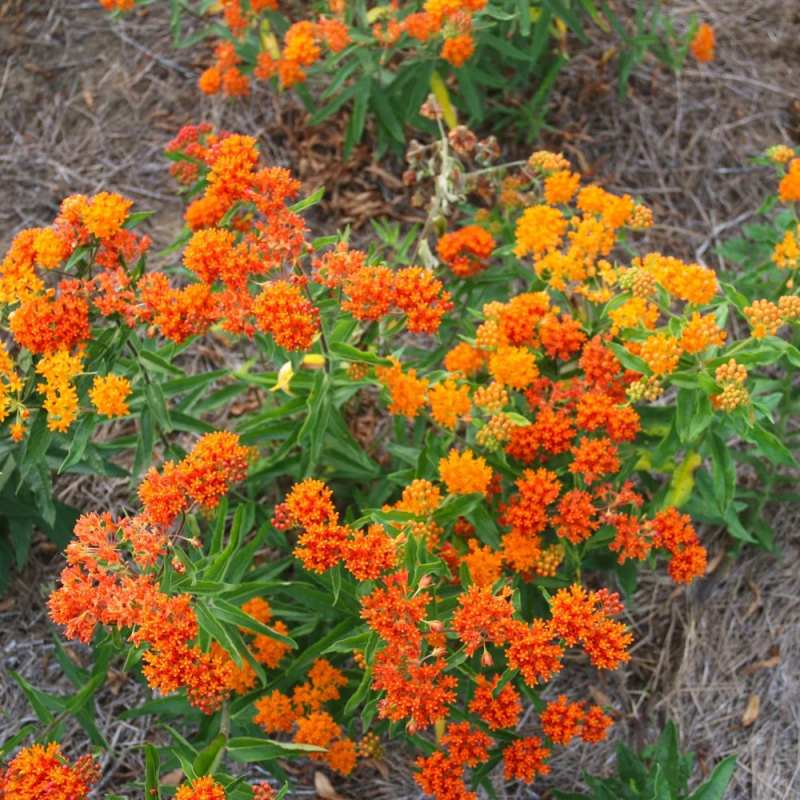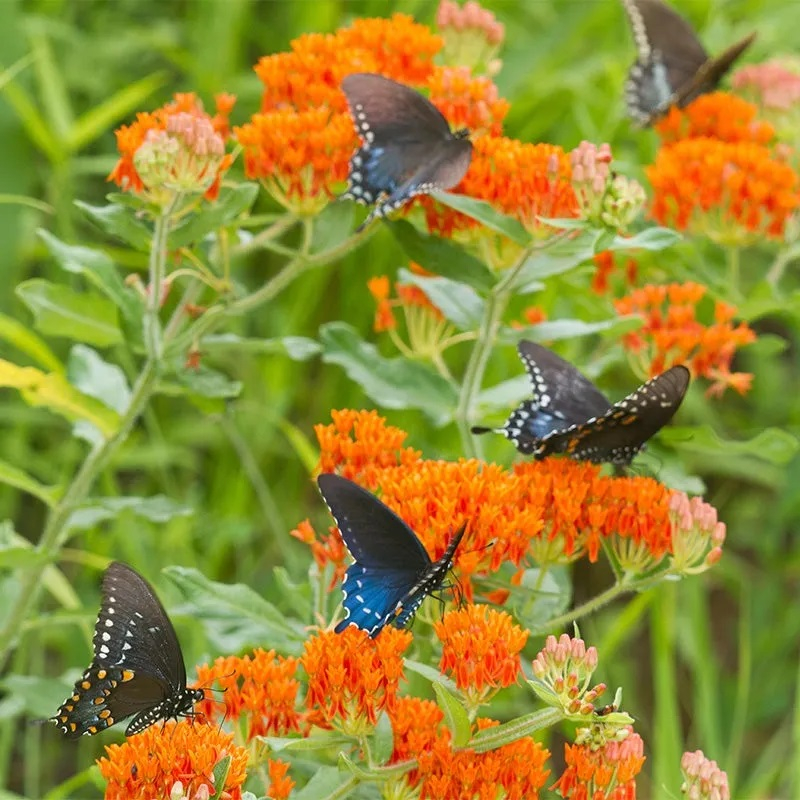Asclepias tuberosa

Asclepias tuberosa species are important sources of nectar for bees and other nectarines as well as a food source for larvae for butterflies with the scientific name Danaus plexippus. Their resin is milky in color and contains alkaloids, gum, and several other complex compounds, including cardenolides (cardiovascular glycosides). Some species are potentially toxic. Asclepias tuberosa is a benefit to plant for other plants growing nearby, as they repel certain pests, especially wood-burning beetles (family Elateridae).
It is herbaceous, perennial, 60-150cm tall, sparsely branched, with white latex. Leaves are opposite, with short stalks, narrow spear-shaped. Clusters of earrings are crown-shaped at the top of the stem, including 6-12 yellow flowers in the middle. Butterflies will be doubly delighted when you plant this vibrant orange flower. Asclepias tuberosa starts to bloom slowly but it is flowers worth the wait. Anything like swallows, springs, and of course, monarch butterflies are likely to appear if you grow this plant.











